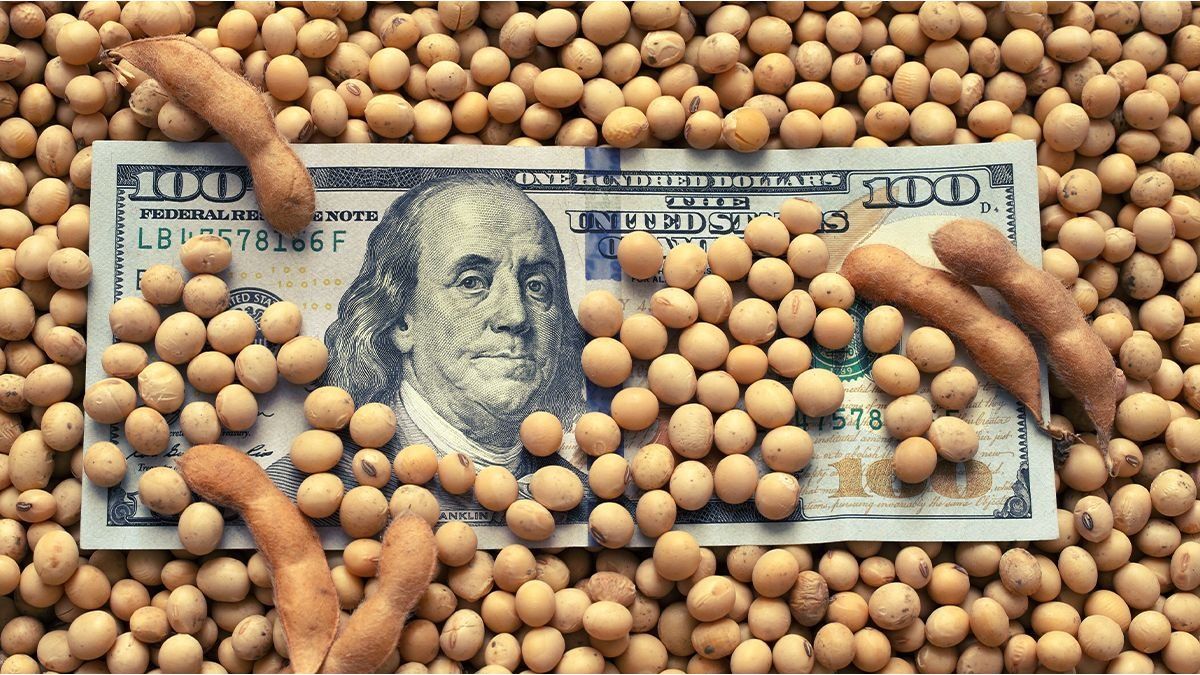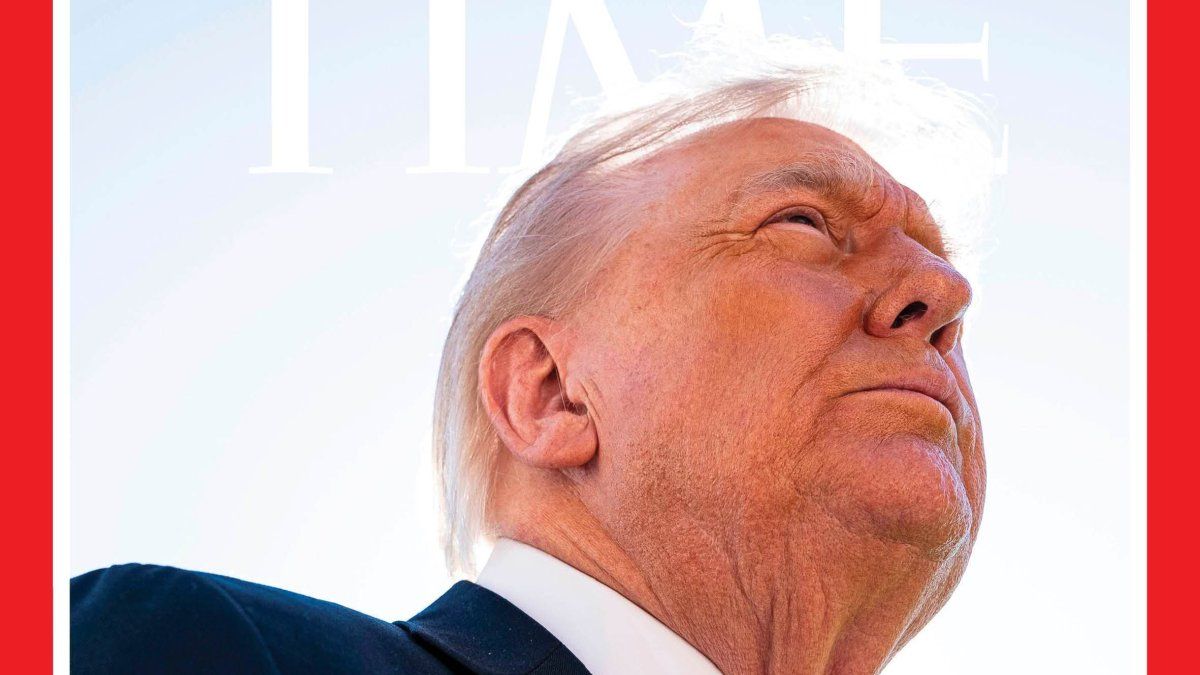Following the start of the “zero emission phase 2” announced by the Government, the lack of dollars continues to present itself as the Achilles heel of economic program and emerges as the main factor of concern for the market and economic agents.
As the economic team enters the most unfavorable time of the year for the flow of foreign currency planted at an official dollar level that the agricultural sector perceives as outdated, another problem deepens: The price of soybeans continues to decline sharply and adds more warning signs for the reserves. Javier Milei asked for patience, renewed promises and the Rural showered him with applause, but In the sector they predict that the grains that still remain in the silo bags will be sold in dribs and drabs.
In the Chicago market, contracts for Soybean futures for August fell 2.2% and the ton closed at US$387.55 per tongiven an improvement in the weather outlook in the US cropping areas. The truth is that this is the continuation of the downward trend that oilseeds and their derivatives (meal, oil, pellets) have been experiencing throughout the year.
To put it into perspective, Argentina’s main export product accumulates a 23% collapse in 2024. According to calculations by Salvador Vitellieconomist at Romano Group, with this fall Soybeans return to 2006 levels measured in real terms.
image.png
The downward trend only adds obstacles to the most sensitive front for the Government’s plans. It further discourages producers from selling their grains or setting a price, while fewer dollars will be earned for each ton exported.
Soybeans: liquidation “drop by drop”
Although the decline in the pace of liquidation was less considerable in agriculture than in the rest of the export sectors during a June that showed the first deficit in the exchange balance since October 2023, the truth is that There is still a lot of soybeans left to be sold. Grain sales in recent weeks have been largely supported by the late corn harvest, according to industry sources.
Meanwhile, there are still about 24 million tons of soybeans in the silos and there are more than 7 million tons of the oilseed already delivered but with a price pending to be fixed. This implies that The field still holds around US$13 billion.
This Sunday, at the Rural, Milei asked ruralists for patience and dashed expectations of an announcement regarding withholdingsHe gave an ideological speech, appealed to a model of country identified with the agro-export model of the early twentieth century and told them to accompany him because “there are only two paths.” Although he was showered with applause, that does not mean that the dollars that Milei needs to get through the next few months will appear: producers expect a greater devaluation that the Government completely rules out and/or a reduction in withholdings that the President has already kicked off, to which is added the deepening of the fall in the price of soybeans.
A report by Dante Romanoresearcher at the Center for Agribusiness and Food at the Austral University, states that “The remaining soybeans will continue to be protected expecting a better input-output relationship and, although they are more inclined to sell corn, there are delays anyway.” And he points out that this will happen even among those who value that the latest announcements of exchange rate intervention will result in a gradual reduction of the gap: “This does not lead producers to accelerate their sales either.”
“It will be liquidated drop by drop. Although there is sympathy in the sector on the political or ideological level (with what Milei said), there is no confidence in the economic level. Those who have reserves prefer to keep them in their pockets in the field or in the silo and not in the banking system, even less knowing that there are exchange rate lag. Several of the actors of this Government are from the club of exchange rate delay,” he said. Eduardo Buzziformer president of the Agrarian Federation, speaking to Radio 10.
Dollars, the Achilles heel
The truth is that the Government entered the “zero emission” phase with Negative reserves of more than US$4 billionAnd according to Milei and the president of the Central Bank, Santiago Bausili, they expect to lose up to US$3 billion in the coming months, which are always the most unfavorable of the year for the flow of foreign currency. This Monday, for example, the BCRA sold US$124 million.
In this context, The latest measures add more pressure to reservesOn the one hand, the intervention in the CCL will require the sale of around US$1.8 billion, since the BCRA confirmed that it will seek to sterilize the $2.4 trillion that were issued after April 30 through the purchase of foreign currency. Also, the advance purchase by the Government of US$1.5 billion to ensure the payment of interest to bondholders next January. On the other hand, the easing of the exchange rate restriction announced last week (the first significant one of the current administration), which shortened by half the period of access to the official dollar for the payment of most imports.
“Beyond the positive signal that is sought to be given regarding the gradual lifting of exchange restrictions, the truth is that the measure once again puts the emphasis on the Main uncertainty of the economic program: the lack of dollars“, said a report from the Vectorial Consulting.
With the intended foreign currency from a possible new debt approved by the IMF moving away, the Government bet on money laundering as the most immediate source from which it hopes to obtain around US$1.9 billion. But the numbers on the reserves front do not seem to add up and the market translates this into a country risk that remains above 1,550 basis points.
“Fulfilling external commitments, lowering inflation by anchoring the dollar and normalizing the exchange rate regime are all objectives of this administration, but the market is still not convinced that all the necessary currencies exist. to cover this variety of ends and begins to bet on which of them it will have to give up,” Vectorial points out. And he wonders if the possible provisional alternative ways that the economic team can resort to in order to obtain dollars “will allow time to be gained for something more than extending and deepening imbalances that will later be more difficult to repair.”
Source: Ambito




